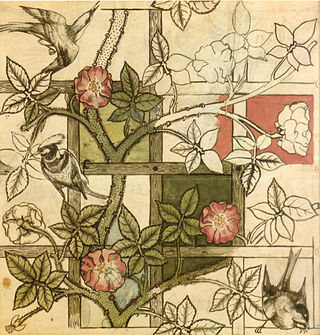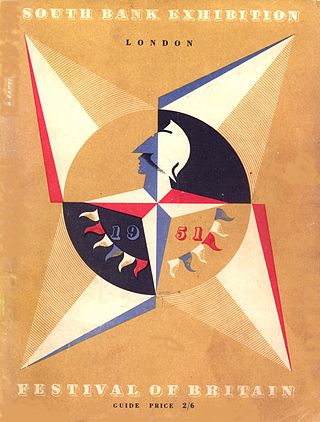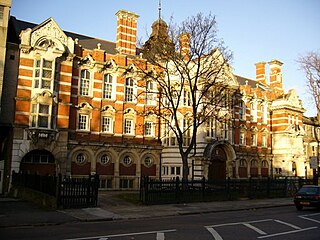
Barney Bubbles was an English graphic artist whose work encompassed graphic design and music video direction. Bubbles, who also sketched and painted privately, is best known for his distinctive contribution to the design practices associated with the British independent music scene of the 1970s and 1980s. His record sleeves, laden with symbols and riddles, were his most recognisable output.

The Arts and Crafts movement was an international trend in the decorative and fine arts that developed earliest and most fully in the British Isles and subsequently spread across the British Empire and to the rest of Europe and America.

The Festival of Britain was a national exhibition and fair that reached millions of visitors throughout the United Kingdom in the summer of 1951.

Camberwell College of Arts is a public tertiary art school in Camberwell, in London, England. It is one of the six constituent colleges of the University of the Arts London. It offers further and higher education programmes, including postgraduate and PhD awards. The college has retained single degree options within Fine Art, offering specialist Bachelor of Arts courses in painting, sculpture, photography and drawing. It also runs graduate and postgraduate courses in art conservation and fine art as well as design courses such as graphic design, illustration and 3D design. It has been ranked as the top British art school by The Times.

Chelsea College of Arts is a constituent college of the University of the Arts London based in London, United Kingdom, and is a leading British art and design institution with an international reputation.

Winchester School of Art is the art school of the University of Southampton, situated 10 miles (14 km) north of Southampton in the city of Winchester near the south coast of England.

Vuokko Hillevi Lilian Eskolin-Nurmesniemi is a Finnish textile designer. She is best known for her work as one of the two leading designers of the Marimekko company. Her signature striped Jokapoika shirt helped to make the company's name.

Founded as the Brighton School of Art in 1859, the University of Brighton School of Art and Media is an organisational part of the University of Brighton, with courses in the creative arts, visual communication, media, craft and fashion and textile design.
Paul Gorman is a British-Irish writer and curator.
Barnett Freedman CBE RDI was a British painter, commercial designer, book illustrator, typographer, and lithographer.

Marianne Straub OBE was one of the leading commercial designers of textiles in Britain in the period from the 1940s to 1960s. She said her overriding aim was: "to design things which people could afford. ... To remain a handweaver did not seem satisfactory in this age of mass-production".
Founded in 1843, the School of Art & Design at Nottingham Trent University is one of the oldest in the United Kingdom.
Frederick Henri Kay Henrion, RDI, OBE, was a Nuremberg-born German graphic designer.
Mary Ping is an American fashion designer based in New York City. She is best known for her conceptual label "Slow and Steady Wins the Race", although she has also designed under her own label.
Richard Hollis Hon. FRSL is a British graphic designer. He has taught at various art schools, written books, and worked as a printer, as a magazine editor and as a print-production manager. Hollis was elected as an Honorary Fellow of the Royal Society of Literature in 2019.
The University of Brighton Design Archives centres on British and global design organisations of the twentieth century. It is located within the University of Brighton Grand Parade campus in the heart of Brighton and is an international research resource. It has many archival collections that were generated by design institutions and individual designers

Hans Arnold Rothholz (1919–2000) was a poster designer and graphic artist born in Dresden, Germany, who immigrated to Britain in 1933. Interned as an enemy alien during the early part of the Second World War, he designed posters for the Royal Society for the Prevention of Accidents and other clients including Wembley Stadium, Ealing Studios and other major clients between 1942 and the 1960s. Along with fellow designers Tom Eckersley, George Him and Abram Games, he has been credited with "transform[ing] visual communication in Britain".

Althea McNishCM FSCD was an artist from Trinidad who became the first Black British textile designer to earn an international reputation.

George Him was a Polish-born British designer responsible for a number of notable posters, book illustrations and advertising campaigns for a wide range of clients.

Native American fashion is the design and creation of high-fashion clothing and fashion accessories by Native Americans in the United States. This is a part of a larger movement of Indigenous fashion of the Americas.













